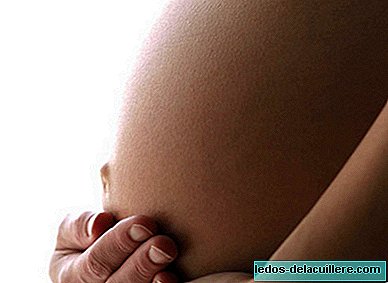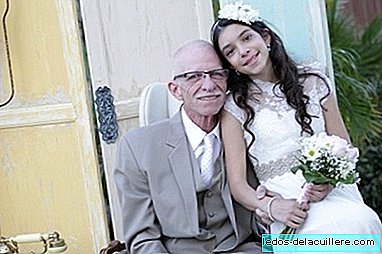
We continue with the second part of the interview with Mónica García Calzada, lactation consultant, mother of four children and member of the Nacentia team, private natural childbirth clinic.
In the first part of the interview he talked to us about breastfeeding, in it he gave us keys to a successful and happy breastfeeding, while now he will answer us about the importance of conscious breathing at the time of delivery.
In the area of childbirth preparation you teach a workshop called conscious breathing. What is the importance of breathing in childbirth?
Breathing is essential throughout our lives, but it is especially important in the management of pain during childbirth.
When we become aware of our breathing, we automatically move to the present moment, we live here and now. This is the great quality of breathing consciously, in general we are always thinking about what we have done or what we have to do, that is to say in the past or in the future. If we reflect on how many times throughout the day we have been able to keep our mind in the present in what we were doing, the answer is probably none.
What we get through conscious breathing, is to activate substances and systems that work on the body as an analgesia and that counteract pain. If we, during the dilation, focus on breathing, we can silence our mind, banish expectations and be able to live the birth from fullness and enjoyment.
What types of breathing exist?
There are three types of breathing that correspond only to the filling of the different parts of the lung.
Abdominal or diaphragmatic breathing: It is the filling of the lower part of the lung, it is the correct way to breathe with which we are born and unfortunately in many cases it is lost over time.
Chest or intercostal breathing: It is the filling of the middle part of the lung, practicing this type of breathing on a regular basis we expand our lung capacity. An interesting fact is that we only use one tenth of our lung capacity.
Clavicular breathing: It is the filling of the upper part of the lung, this type of breathing does not make sense in an isolated way, it is normal for it to be part of a deep or complete breath, since not enough oxygen is inhaled or enough carbon dioxide is exhaled, We do not give the body what it needs to function properly.
By last, deep or full breath. It is the filling of the entire lungs, it is formed by the three breaths mentioned above.

Is it necessary to learn breathing techniques at the time of delivery or is it preferable to let the breath flow on its own? There are women who feel overwhelmed by believing that at the time of delivery they should be more aware of how to breathe than of the delivery itself.
I do not think we have to learn different breathing techniques for childbirth, because when we learn some memory and we do not have it integrated as a habit in our body, the tendency is that it does not help us much.
Childbirth is a physically strenuous and mentally strenuous process if the mother is trying to remember the breathing techniques she learned by heart and has most likely not integrated them into her being. Your energy is dispersing, and it is easy that by failing to remember them, you feel fear, this fear helps increase tension and the more tension the more the pain will increase. And here we have the Read triangle, more fear more tension, more tension more pain. The uterus is a muscle like any other, if we stress ourselves, the uterus has to make an overstress and then the sensation of pain will increase.
I believe that a woman in the process of childbirth needs two things: to have had previous information on which process she is going to live, and, at the time the contractions begin, she must concentrate on her breathing whatever, without trying to force any. Obviously, if it is an abdominal breathing, calm and calm better than better, since the main characteristic of abdominal breathing is relaxation.
What service do you offer to mothers in Nacentia?
In Nacentia we have a multidisciplinary team, highly qualified and motivated, composed of gynecologists, pediatricians, midwives, physiotherapists, lactation consultants, auxiliaries, etc., whose philosophy is to provide excellent and individualized care in pregnancy, childbirth and puerperium and respecting the Natural childbirth recommendations from prestigious international associations.
In pregnancy we offer workshops in the area of pioneer maternal / paternal education, such as pain management, swimming lessons or movement in childbirth.
Our pregnant women design a customized delivery. They decide and choose how to live this process, being one of our fundamental objectives to guarantee maternal-fetal well-being. We have a telephone line 24 hours a day, every day of the year for various inquiries. We offer the latest in analgesia, such as Entonox, the use of water or tension among others.
We are also pioneers in a topic that we consider key, the accompaniment in childbirth, which is to provide the woman and her partner with physical, emotional and informative support, during labor, the birth of the baby, the puerperium and the upbringing .
Do you think the woman is going towards a happier birth?
I think so, fortunately this is the trend. It is becoming easier to get a non-mediated delivery, but I think there is still much to do.
I believe that changing protocols for action is difficult, I hope that over time the generations to come can enjoy an unrespected birth; because in my opinion it should be a right not a privilege.
We sincerely thank Monica García Calzada That you have agreed to this interview and that you have given us such interesting answers for pregnant women in preparation for childbirth and breastfeeding.
Photos | Perfect Insect and Torsten Mangner In Babies and more | The Bradley method of controlling pain during childbirth












